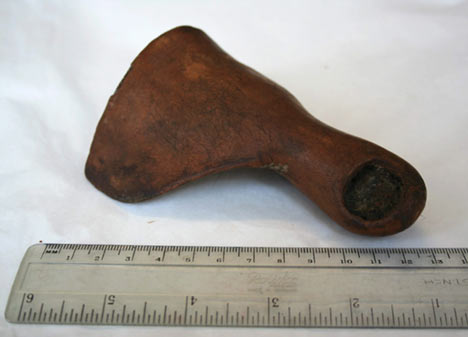It wasn't simply cosmetic. The two toes, a three-part wood and leather artifact housed in the Egyptian Museum in Cairo, and the Greville Chester artificial toe on display in the British Museum, also helped their toeless owners walk like Egyptians.
Dr. Jacky Finch, based in the University of Manchester's KNH Centre for Biomedical Egyptology, recruited two volunteers whose right big toe had been lost in order to test exact replicas of the artificial toes in the Gait Laboratory at Salford University's Centre for Rehabilitation and Human Performance Research.
Writing in the Lancet, Finch said, "To be classed as true prosthetic devices any replacement must satisfy several criteria. The material must withstand bodily forces so that it does not snap or crack with use. Proportion is important and the appearance must be sufficiently lifelike as to be acceptable to both the wearer and those around them. The stump must also be kept clean, so it must be easy to take on and off. But most importantly it must assist walking.
"The big toe is thought to carry some 40% of the bodyweight and is responsible for forward propulsion, although those without it can adapt well. To accurately determine any level of function requires the application of gait analysis techniques involving integrated cameras and pressure devices placed along a walkway."
The volunteers were asked to wear the toes with replica Egyptian sandals and, while neither design was expected to perform exactly like a real big toe, one of the volunteers was able to walk extremely well with both artificial toes. No significant elevation in pressure under the foot was recorded for either toe, although both volunteers said they found the Cairo toe particularly comfortable.
The Greville Chester toe – made from cartonnage, a sort of papier maché made using linen, glue and plaster – shows considerable signs of wear, while the Cairo toe has certain features, such as a simple hinge, a chamfered front edge and a flattened underside.

Greville Chester toe. Credit: British Museum
"The wear on the Greville Chester toe and the important design features on the Cairo toe led me to speculate that these toes were perhaps worn by their owners in life and not simply attached to the foot during mummification for religious or ritualistic reasons," said Finch. "However, until we were able to test replicas of both toes using volunteers under laboratory conditions, it remained uncertain if they could indeed help their owners to walk.
"My findings strongly suggest that both of these designs were capable of functioning as replacements for the lost toe and so could indeed be classed as prosthetic devices. If that is the case then it would appear that the first glimmers of this branch of medicine should be firmly laid at the feet of the ancient Egyptians."




Comments